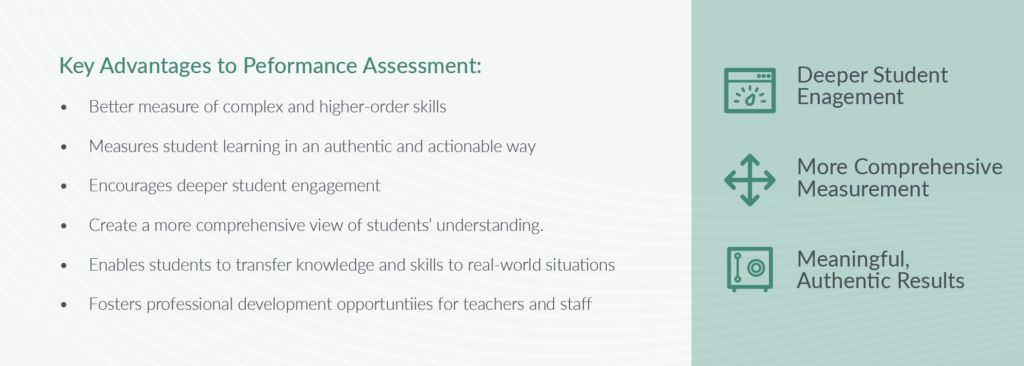MZD presents the second in a series of articles on the Power of Performance Assessments. For each email, we will highlight a segment from our published white paper that features the benefits of performance assessments. This week our focus is on how performance assessments can be used in areas where students can showcase their ability to synthesize, create, and problem-solve.
Performance assessment allows for students to answer correctly, not because they guess, but because they confidently know the content. Performance assessment is different from traditional assessment because it gives students freedom to show their knowledge in ways that traditional assessments cannot. In performance assessments, students are given a problem to solve, a prompt to respond to, or a task to complete. For instance, a prompt might ask students to write a persuasive essay that requires a student to take a stand and back up their point with well reasoned arguments. Students can respond using their own insights and ideas. Performance assessments are structured in a way encourages deeper engagement by eliciting elaboration, questioning, synthesis, and justification.
Many districts are moving toward standards-based grading and performance assessments. Performance assessments make it possible to evaluate standards that have traditionally been difficult to assess with only multiple-choice assessments. Hence, tasks are being incorporated more frequently into assessments. A performance assessment uses either an analytic or a holistic rubric to rate student responses. Traditional assessments typically assign points based on right or wrong answers. Performance assessments—and specifically analytic rubrics— allow for partial credit scores and for ratings to be assigned along a scale, not just based on a right or wrong answer.



